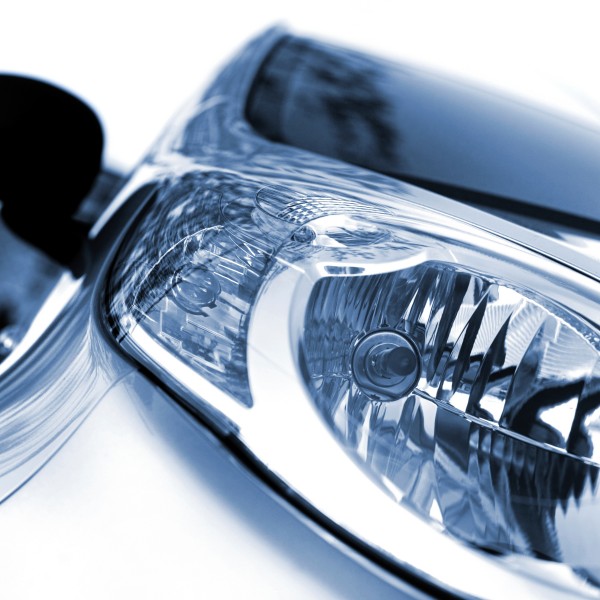By Jake Sanders, Product Development Manager, Donaldson Integrated Venting Solutions
With the growth of electric and hybrid vehicles, lithium-ion batteries are playing an increasingly critical role in the automotive world. The rechargeable batteries offer a high ratio of energy per unit volume and can be arranged efficiently in packs to power vehicles. Unlike smaller lithium-ion batteries used in home electronics, automotive lithium-ion batteries need robust protection from harsh external conditions, along with adequate venting for temperature and pressure fluctuations.
Dual-stage enclosure protection venting has proven effective in meeting the needs of automotive batteries. The first stage equalizes pressure while preventing the ingress of water and contaminants. Stage two venting fully opens in the case of rapid pressure and heat buildup to allow expanding gases to escape, preventing further damage to remaining cells. In most instances, a single vent assembly can accomplish both functions.
Why Enclosure Protection Venting Is Needed

Battery enclosures are typically sealed metal or plastic shells designed to protect the battery from dust, debris, and moisture, such as rain, snow and car-wash sprays. Any one of those elements can damage battery cells and ancillary electronics, so an effective enclosure keeps those potentially harmful materials away from the battery. A battery pack for an electric vehicle may have hundreds of cells contained within several modules, as shown in Figure 1.
In addition to keeping out contaminants, battery enclosures need to handle pressure differentials between the enclosure interior and the surrounding atmosphere. The pressure differential can fluctuate widely during normal vehicle operation due to ambient temperature changes, heat generation in cells, and atmospheric pressure changes. Much like an automobile passenger might experience “ear popping” while traversing mountainous terrain, battery enclosures experience similar pressure fluctuation as elevation changes.
To prevent the collapse or compromise of the protective shell, enclosures must be vented to equalize internal and external pressures, while releasing gases produced in a rapid pressure buildup often called “thermal runaway.” Whether gradual or sudden, pressure buildup can stress seals, leading to leaks and potential explosions.
The specific effects of venting can be better understood by reviewing the interior of a lithium-ion automotive battery. A battery pack generally consists of two sections fastened together, with a gasket sealing the connection. If the enclosure is inadequately vented, leaks can develop after the enclosure experiences multiple small pressure differences. With electric automobile manufacturers sometimes offering eight-year warranties, battery enclosures may be expected to last at least that long. Proper venting reduces the number and severity of pressure differentials experienced by the seals, extending the life expectancy of the seals and enclosures.
Stage One Venting

Stage one venting, also referred to as passive venting, typically relies on an expanded polytetrafluoroethylene (ePTFE) vent to allow pressure equalization, while also preventing contaminants from entering the enclosure. ePTFE membranes, such as those shown in Figure 2, appear opaque to the naked eye and offer ingress protection against water, dust, solvents, and other contaminants. However, sub-micron openings in the membrane allow gases to pass through, equalizing pressures.
Depending on the type of contaminant exposure anticipated, vents can be designed for various levels of protection from foreign bodies and/or moisture. A typical battery enclosure might be designed to provide protection from dust, submersion, and high-pressure water spray, and hold back water at pressures of up to 690 millibars.
The reduction of pressure differentials through stage one venting can be seen in Figure 3. A battery enclosure exposed to a 50°C temperature increase in 60 minutes, roughly simulating a car started on a cold day and driven at high speeds, would experience pressure differentials of up to 180 millibars with no venting. An enclosure with a 50-mm-diameter vent assembly would experience differentials of less than 10 millibars.

Stage Two Venting
While stage one venting handles the gradual pressure changes, it may not be able to handle rapid pressure buildup in a thermal runaway event. Stage two venting, also referred to as active venting, is designed to handle these situations, with a vent that opens fully to allow rapidly expanding gases to escape in a controlled manner, preventing further damage to remaining cells, as well as uncontrolled explosion of the enclosure itself.
Stage two venting is often provided with mechanical features integrated with the ePTFE membrane to allow rapid degassing during thermal events, when the gas is expanding at a rate the ePTFE material cannot passively equalize. Essentially, the vent prevents the enclosure from exceeding a pressure that would cause catastrophic failure during a thermal runaway event, when gases and high temperatures are generated rapidly.
Figure 4 shows how a combined passive and active venting system can prevent enclosure rupture. An enclosure that would rupture at a pressure of 1,500 millibars could be equipped with an active venting system that opens at 500 millibars. The combined system would limit the pressure differential to approximately 750 millibars, well below the rupture pressure. With no venting, the enclosure would rupture quickly.

To incorporate a stage two vent, designers must consider how fast gases will be released and at what pressure the vent will fully open. The vent must then be designed to keep pressure below the explosive pressure, which is essentially the maximum pressure that the enclosure can handle before it fractures.
Another design consideration is the pressure at which the enclosure could experience plastic deformation—an irreversible change in shape. This produces undesirable damage to the enclosure, but not necessarily safety issues. On metal enclosures, plastic deformation occurs at a much lower pressure than the explosive pressure. On plastic enclosures, plastic deformation occurs at a pressure closer to explosive pressure. Consequently, proper venting design should account for the difference in material enclosures.
When thermal runaway occurs, the battery will require servicing and/or replacement. Stage two venting is not focused on battery longevity, but rather on safety. Gases need to be vented to reduce heat, diffusing noxious chemicals gradually to avoid high concentration clouds, and avoid flying debris that could result with an explosion.
Summary/Conclusion
With lithium-ion batteries providing the main means of propelling electric vehicles, the importance of proper venting becomes paramount. Properly designed venting systems provide protection from contaminants along with pressure equalization during normal operating conditions, leading to longer-lasting enclosures and battery life cycles. In the rare case when the battery is in the process of burning up, and protection from moisture and debris is less important, the venting system must also be capable of providing immediate pressure relief, avoiding potential explosions and other catastrophic outcomes. Using dual-stage venting systems is the key to handling a wide range of automotive venting needs.
Resources





